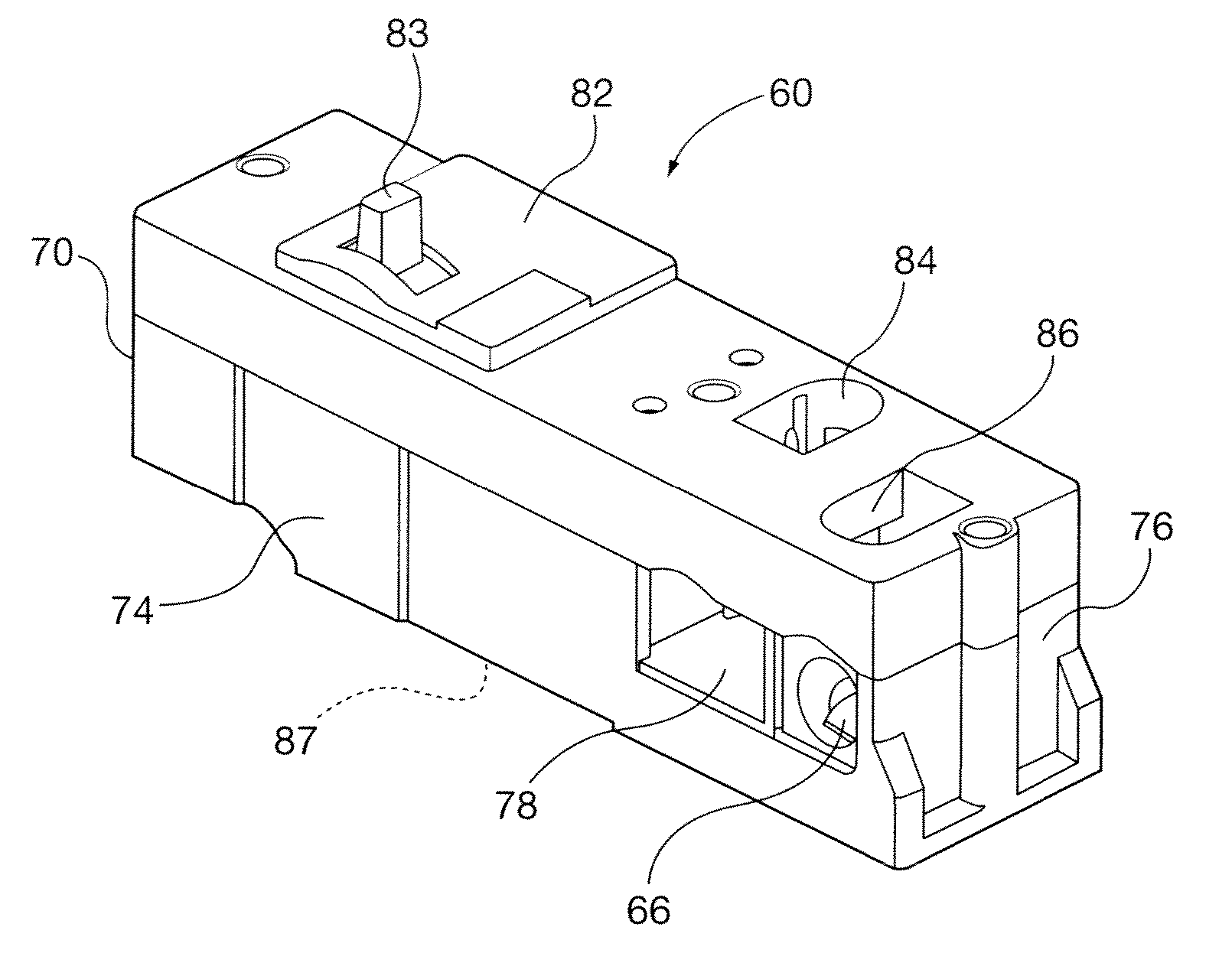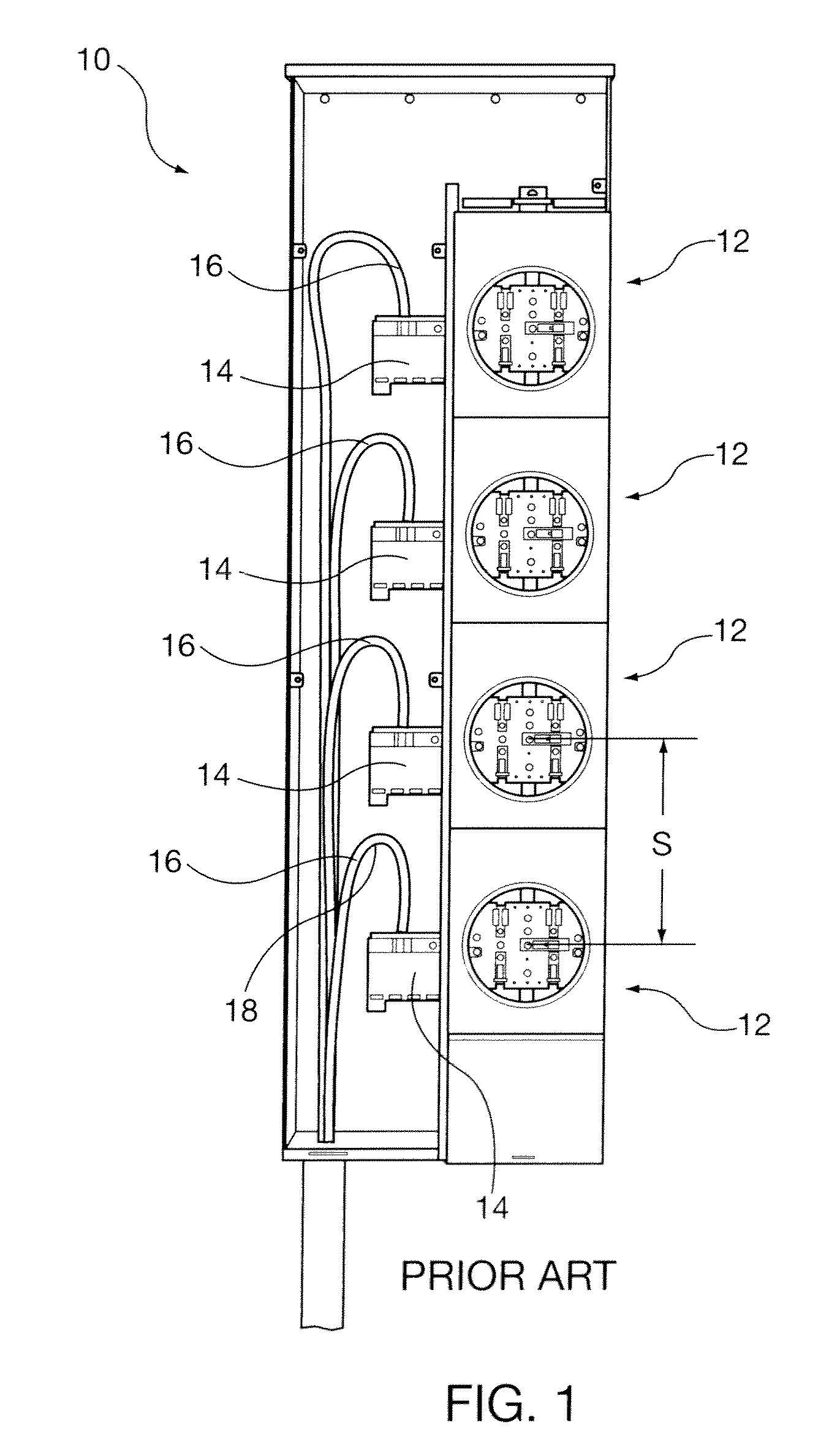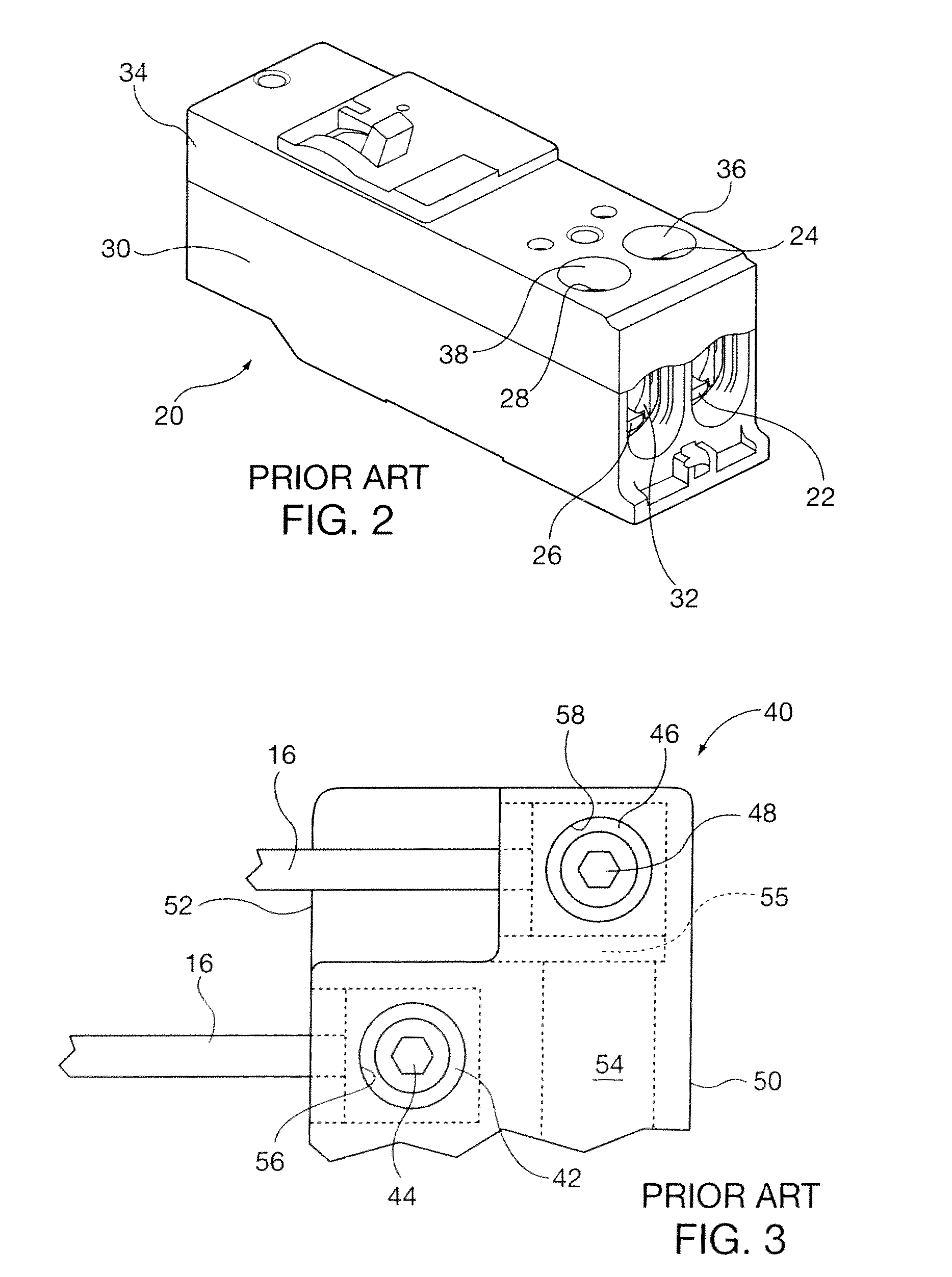Side entry circuit breaker
a circuit breaker and side entry technology, applied in the direction of snap-action arrangements, protective switch terminals/connections, coupling device connections, etc., can solve problems such as configuration of lugs
- Summary
- Abstract
- Description
- Claims
- Application Information
AI Technical Summary
Benefits of technology
Problems solved by technology
Method used
Image
Examples
Embodiment Construction
[0037]After considering the following description, those skilled in the art will clearly realize that the teachings of my invention can be readily utilized in making and using the circuit breaker of the present invention.
[0038]FIGS. 1-3, depicting prior art electrical enclosures and circuit breaker designs have been described in the Background of the Disclosure section, above. The prior art circuit breakers did not offer the design application flexibility to enable left or right side wiring connection or a combination of both. Lugs were permanently oriented to enable only left or top side wiring, among other reasons to comply with electrical code over surface spacing requirements, so that wire or cable conductors were maintained at a minimum distance from other components within the electrical enclosure.
[0039]An embodiment of the circuit breakers of the present invention that enables selective left or right or combination of both side wiring is shown in FIGS. 4-6. Referring generall...
PUM
 Login to View More
Login to View More Abstract
Description
Claims
Application Information
 Login to View More
Login to View More - R&D
- Intellectual Property
- Life Sciences
- Materials
- Tech Scout
- Unparalleled Data Quality
- Higher Quality Content
- 60% Fewer Hallucinations
Browse by: Latest US Patents, China's latest patents, Technical Efficacy Thesaurus, Application Domain, Technology Topic, Popular Technical Reports.
© 2025 PatSnap. All rights reserved.Legal|Privacy policy|Modern Slavery Act Transparency Statement|Sitemap|About US| Contact US: help@patsnap.com



